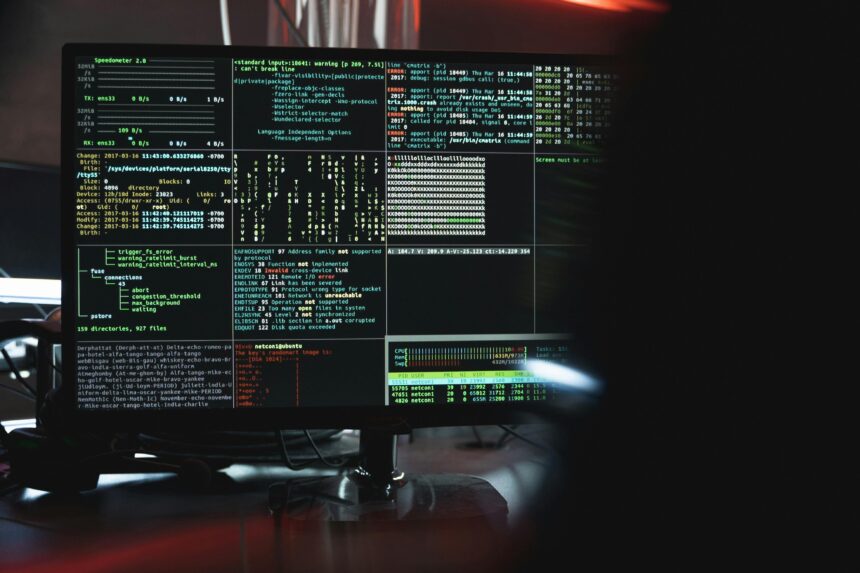In a world where technology is rapidly evolving, fearscans have emerged as a powerful yet enigmatic tool. From enhancing security to raising ethical concerns, fearscan represent a significant leap in how we interact with and interpret emotional data. This blog post aims to demystify fearscan, exploring their applications, benefits, and potential risks. Whether you’re a tech enthusiast or someone curious about new innovations, this comprehensive guide will provide you with valuable insights into the world of fearscan.
What Are Fearscans?
Fearscans are advanced scanning technologies designed to detect and measure fear responses in individuals. Leveraging cutting-edge biometric sensors and AI algorithms, these scans can interpret subtle physiological changes—like heart rate, skin conductivity, and facial expressions—to determine a person’s level of fear. This technology has found applications in various fields, from security and law enforcement to healthcare and marketing.
The Science Behind Fearscans
The efficacy of fearscan lies in their ability to analyze biometric data in real-time. When a person experiences fear, their body undergoes several involuntary responses, such as increased heart rate, sweating, and facial muscle contractions. Fearscans use sensors to capture this data and AI algorithms to analyze it, providing an accurate assessment of an individual’s emotional state.
How Biometric Sensors Work
Biometric sensors are the backbone of fearscan technology. These sensors can monitor various physiological parameters, including heart rate variability, skin conductivity, and facial micro-expressions. By collecting this data, fearscans can offer a detailed picture of a person’s emotional state.
Role of AI in Fearscans
AI algorithms play a crucial role in interpreting the data collected by biometric sensors. These algorithms are trained on vast datasets to recognize patterns associated with fear responses. The combination of biometric sensors and AI allows fearscans to deliver highly accurate and real-time results.
Accuracy and Reliability
One of the most significant advantages of fearscans is their accuracy and reliability. Studies have shown that fearscan can achieve accuracy rates of up to 95%, making them a reliable tool for various applications. However, it’s essential to note that external factors like environment and individual differences can impact the accuracy of these scans.
Applications of Fearscans
Fearscans have a wide range of applications across different sectors. Here are some of the most notable ones:
Security and Law Enforcement
In the realm of security and law enforcement, fearscan can be invaluable. They can be used in airports, public events, and other high-risk areas to identify individuals who may pose a threat. By detecting fear responses, authorities can intervene before a potential threat materializes, enhancing public safety.
Healthcare and Therapy
Fearscan also have significant applications in healthcare and therapy. For instance, they can be used to diagnose anxiety disorders or phobias more accurately. Therapists can use fearscans to monitor their patients’ progress in real-time, allowing for more tailored and effective treatment plans.
Marketing and Consumer Behavior
In marketing, understanding consumer emotions is crucial for creating effective campaigns. Fearscans can provide valuable insights into how consumers react to different advertisements, products, or services. By analyzing fear responses, marketers can fine-tune their strategies to better meet consumer needs and preferences.
Ethical Considerations
While fearscans offer numerous benefits, they also raise important ethical questions. The ability to monitor and interpret someone’s emotional state can lead to privacy concerns and potential misuse.
Privacy Issues
One of the most pressing ethical concerns surrounding fearscan is privacy. The data collected by these scans is highly sensitive and can reveal a lot about an individual’s emotional state. Storing this data securely and using it ethically is paramount.
Potential for Misuse
Another concern is the potential for misuse. In the wrong hands, fearscan could be used for surveillance or manipulation. For example, employers could use fearscans to monitor employees’ emotional states, leading to a toxic work environment.
Legal Frameworks
To address these ethical issues, it’s essential to have robust legal frameworks in place. Regulations must ensure that organizations collect, store, and use fearscan data in a manner that protects individuals’ rights.
Benefits of Fearscans
Despite the ethical concerns, fearscans offer several benefits that can significantly impact various sectors.
Enhanced Security
One of the most significant benefits of fearscan is enhanced security. By identifying potential threats through fear responses, fearscans can help prevent incidents before they occur, making public spaces safer.
Improved Healthcare
In healthcare, fearscans can improve diagnostic accuracy and treatment outcomes. By providing real-time data on patients’ emotional states, healthcare providers can offer more personalized and effective care.
Better Marketing Strategies
For marketers, fearscan offer a unique opportunity to understand consumer behavior more deeply. By analyzing fear responses, marketers can create campaigns that resonate more effectively with their target audience.
Challenges and Limitations
While fearscans offer numerous benefits, they also come with their own set of challenges and limitations.
Environmental Factors
One of the primary challenges is the impact of environmental factors on the accuracy of fearscan. Variables like lighting, temperature, and noise can affect biometric readings, potentially leading to inaccurate results.
Individual Differences
Another limitation is individual differences. People’s physiological responses to fear can vary widely, making it challenging to create a one-size-fits-all solution.
High Costs
The technology behind fearscans is still relatively new and expensive. The high costs associated with implementing these systems can be a barrier for widespread adoption.
Future of Fearscans
Despite the challenges, the future of fearscans looks promising. Advances in biometric technology and AI are likely to improve the accuracy and affordability of fearscan, making them more accessible for various applications.
Technological Advancements
Ongoing research and development in biometric sensors and AI algorithms are expected to enhance the capabilities of fearscan. These advancements will likely lead to more accurate and reliable results.
Wider Adoption
As the technology becomes more affordable, we can expect to see fearscans being adopted in more sectors. From schools to corporate offices, the potential applications are vast.
Ethical Guidelines
The development of clear ethical guidelines and legal frameworks will be crucial for the responsible use of fearscans. These guidelines will help balance the benefits of the technology with the need to protect individual privacy and rights.
FAQs about Fearscans
What Are Fearscans?
Fearscans are advanced technologies that use biometric sensors and AI algorithms to detect and measure fear responses in individuals.
How Accurate Are Fearscans?
Fearscan can achieve accuracy rates of up to 95%, but factors like environment and individual differences can impact their accuracy.
What Are the Applications of Fearscans?
Fearscan have applications in security, healthcare, marketing, and more. They can enhance public safety, improve healthcare diagnostics, and provide valuable consumer insights.
Are There Any Ethical Concerns?
Yes, fearscans raise ethical concerns related to privacy and potential misuse. Robust legal frameworks are needed to address these issues.
What Is the Future of Fearscans?
The future of fearscans looks promising, with technological advancements expected to improve their accuracy and affordability. Wider adoption and ethical guidelines will be crucial for their responsible use.
Conclusion
Fearscans represent a fascinating intersection of technology and emotion, offering unprecedented insights into human behavior. While they come with their own set of ethical concerns and challenges, the potential benefits in terms of security, healthcare, and marketing are immense. As we explore the capabilities of it, we must balance innovation with ethical considerations, ensuring that we use this powerful technology responsibly.
If you want to learn more about it and their applications, explore additional resources or consult with experts in the field. The future of fearscans is bright, and staying informed will help you make the most of this cutting-edge technology.




